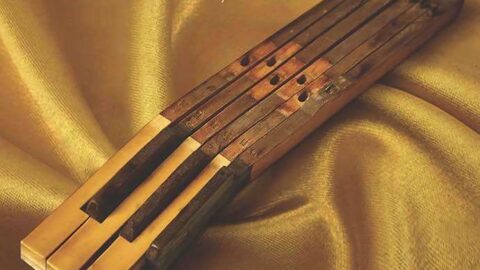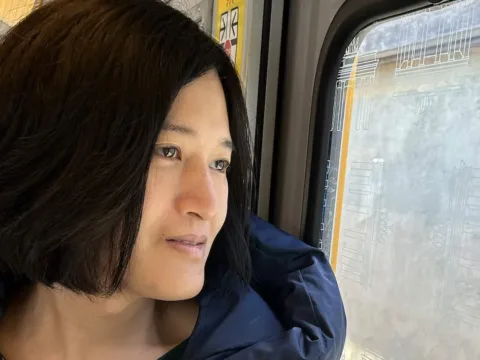The music of Pulitzer Prize winner Tania León is intimately connected to memories of her formative years in Havana, and to her many relationships and encounters with people over the years. In the late 1940s, when León was 5 years old, her Chinese-Cuban grandfather bought her a piano; it became a new member of the family, “a witness to comings and goings,” according to the liner notes of her latest album. Teclas de mi piano (“Keys from my piano”), out now on Albany Records, compiles 11 of León’s solo piano compositions written over a 45-year span. The most mature of them serve as capsules of the Cuban-American composer’s eclectic music for orchestra that went unperformed in the U.S. for decades — works defined by great rhythmic vivacity, malleable harmonies, and sensible shifts in character.
Pianist Adam Kent, a specialist of music from Spain and Latin America, manages León’s crackling syncopations and brooding, contrasting reveries. He premiered Homenatge, the opening selection, in 2011; the long association with León brings forth confident interpretations and an inner fire that is consistent with the Afro-Cuban rhythms and multicultural syntheses at the heart of the scores. Inspired by Catalan composer Xavier Montsalvatge (hence the spelling), Homenatge arranges cascading notes into short structural cells. Contrasting ostinatos in varying degrees of loudness stabilize the runaway flurries that scamper up the keyboard. A markedly distinct, calmer section follows, with a soulful immediacy that nearly cries for a singalong melody. Kent’s unhurried touch accomplishes the change in mood and texture exquisitely.

The clave rhythm from Cuba is most evident and obstinate in Tumbao (2005), dedicated to Celia Cruz, but it returns in different guises; Mística (2003), for instance, pulls it under more complex polyrhythms. The composition’s angular phrases, chromatic scurries, and spiky jabs, which continue to sting even after the frenzied paces relaxes, show León at her most dissonant.
In Momentum (1984), Kent’s pianism unfolds in long, continuous breaths, encompassing the piece’s jazzy stretches, outbursts in eccentric rhythms, and reassuring introspective turns. Some of that jazziness also figures in going… gone (2012), a transfigured, topsy-turvy version of the song “Good Thing Going,” from Stephen Sondheim’s 1981 musical Merrily We Roll Along. It attempts to integrate Broadway and a harmonically saturated kind of modernism, with varying degrees of success and sometimes intentionally derailed runs: “In the middle there is a lot of me going everywhere,” León acknowledges in the notes. “It’s me taking a tour over here, going over there. That’s why I call it going… gone.”
Only five minutes long, the striking Ritual (1987) captures the artistic relationship between Kent and León. It opens with long, moodily resonating notes; at first isolated, they come together into unresolved chords that hint at the tumultuous development ahead. The pace increases gradually, but after a final crescendo, Kent’s attack takes hold furiously, reined in by his technical command.

The source material for Variación (2006) is the Goldberg Variations, but in retrograde. With a refracted approach similar to that of going… gone, León suggests parallels between Bach and Sondheim. It is also the most consonant selection on Teclas de mi piano, apart from the four short pieces from the 1960s that are interspersed, including two miniature preludes that Kent plays with relish. Though he handles Variación with Bach’s mathematical precision, the Goldberg theme is only hinted at; the reinterpretation subjects it to a harmonic treatment that seems to run against the grain. Ostensibly an intellectual exercise, Kent renders the piece surprisingly persuasive, with overlapping voices that jostle and vie for attention, tempered by occasional moments of respite.
The cover photo for Teclas de mi piano shows what remains from León’s first piano; though it succumbed to termites long after her move to the United States in 1967, six keys were salvaged and sent stateside by her nephew as a souvenir of her childhood and former life in a small district in faraway Havana. Listening to the album, you can almost feel the history — and León’s personal and artistic growth — that the photo symbolizes and the recording documents.
I CARE IF YOU LISTEN is an editorially-independent program of the American Composers Forum, funded with generous donor and institutional support. Opinions expressed are solely those of the author and may not represent the views of ICIYL or ACF.
A gift to ACF helps support the work of ICIYL. For more on ACF, visit the “At ACF” section or composersforum.org.
























